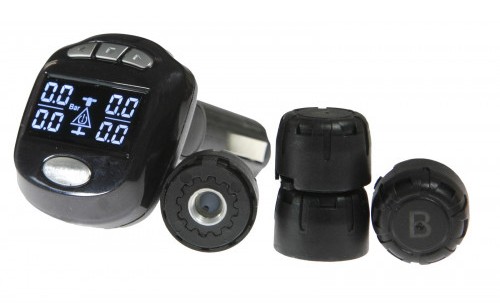Tyre pressure is something most travellers check prior to hitting the road for their trip and don’t check again until the next trip.
Pumping up and maintaining the pressure of your tyres is one of the most important things you can do whether it be your car or the RV.
Tyres provide a vital link with the road, one that properly maintained gives us the ability to steer, brake, corner and accelerate. They also help determine the fuel economy we value so highly, but most importantly they keep us out of trouble.
Installing a Tyre-Pressure Monitoring System (TPMS) can prevent any trouble as this electronic system is designed to monitor the air pressure inside the pneumatic tyres on various types of vehicles.
The aim of a TPMS is to extend your tyres life (under-inflated tyres wear faster than correctly inflated tyres); reduce driving risks and avoid traffic accidents; and improve fuel efficiency.
TPMS report real-time tire-pressure information to the driver of the vehicle, either via a gauge, a pictogram display, or a simple low-pressure warning light.
The system won’t stop a tyre from blowing out but it will give you a warning that either the tyre pressure or temperature is not at a safe operational level, giving you time to slow down, stop and check the tyre condition.
TPMS can be divided into two different types – direct (dTPMS) and indirect (iTPMS).
Both will trigger a warning light on the dash when low tyre pressure is recognised, but the method of detection is quite different.
The indirect system uses the car’s Antilock Braking System (ABS) sensors to measure wheel rotation. If one wheel is spinning faster, the system deduces that deflation has occurred and triggers the warning.
The direct system uses wireless sensors in each wheel that directly measure tyre pressure and transmit this data to a display unit. When pressure drops below a pre-determined point, the warning is raised. Although generally more expensive than the indirect system, the direct system is less prone to inaccuracies due to tyre rotations and replacements, and can provide actual pressure readings.
What are the benefits of using a tyre pressure monitor?
The ability to monitor your tyre pressures while driving has many benefits:
- Be alerted to any unexplained drops in air pressure, potentially saving a tyre before it’s damaged beyond repair.
- Monitor individual air pressures in each tyre as you drive in different conditions, and adjust them if necessary, optimising vehicle handling and extending tyre life.
- Increase fuel efficiency – maintaining the tyre pressure at the proper level will improve mileage by lowering the fuel consumption.




